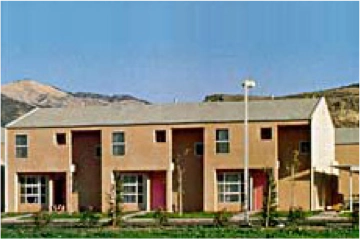Extremely Low-Income Housing Needs
The category “extremely low-income households” is a subset of “very low-income households,” and is defined as 30 percent (or less) of the area median income. The housing element must quantify existing and projected extremely low-income households, analyze their housing needs, and assess the kind of housing available and suitable for extremely low-income households.
Government Code

Government Code (GC) Section 65583(a) requires “Documentation of projections and a quantification of the locality's existing and projected housing needs for all income levels, including extremely low-income households [GC 65583 (a)(1)]”.
Requisite Analysis
Housing elements must include quantification and analysis of existing and projected housing needs of extremely low-income (ELI) households. ELI is a subset of the very low-income households and is defined as 30 percent of area median income and below.
A thorough analysis includes the following:
- An estimate of the number of existing ELI households.
- An assessment of the kind of housing available and suitable for ELI households (including supportive housing and single-room occupancy units) and whether existing zoning permits those housing types.
- An estimate of the number of projected ELI households.
Local agencies may calculate the projected housing need for ELI households by applying one of the following two methodologies to the regional housing needs allocation (RHNA) for very low-income households:
- Use available U.S. Census data to calculate the percentage/number of very low-income households that qualify as ELI households.
OR
Presume that 50 percent of very low-income households qualify as ELI households.
The provided number of ELI households and very low-income households must equal the jurisdiction's RHNA for very low-income households.
The analysis should assess the kind of housing available and suitable for ELI households (including supportive housing and single-room occupancy units) and whether existing zoning permits those housing types.
ELI households may require specific housing solutions such as:
- Deeper income targeting for subsidies.
- Housing with supportive services.
- Single-room occupancy and/or shared housing.
- Rent subsidies (housing vouchers).
The U.S. Department of Housing and Urban Development (HUD) and U.S. Census data from the Comprehensive Housing Affordability Strategy (CHAS) data, can be used to determine the number of ELI households and very low-income households that have housing cost burdens and other housing problems.
Sample Table
The following sample table can help with organizing critical information. The information provided in the table should be tailored to the jurisdiction and followed by appropriate analysis. (Note: This sample table is not intended to substitute for addressing the analytical requirements of housing-element law.)
| Housing Problems for All Households | |||
|---|---|---|---|
| Cost/Fee Type | Total Renters | Total Owners | Total Households |
| Household income <= 30% median family income | |||
| % With any housing problems | |||
| % Cost burden > 30% | |||
| % Cost burden > 50% | |||
| Household income > 30% to <= 50% median family income | |||
| % With any housing problems | |||
| % Cost burden > 30% | |||
| Household income > 50% to <= 80% median family income | |||
| % With any housing problems | |||
| % Cost burden > 30% | |||
Source: HUD Comprehensive Housing Affordability Strategy (CHAS) Data - Data Query Tool

